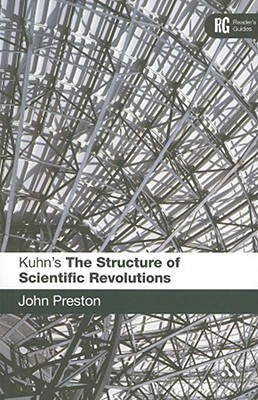
- We will send in 10–14 business days.
- Author: John Preston
- Publisher: CONTINNUUM 3PL
- ISBN-10: 0826493769
- ISBN-13: 9780826493767
- Format: 14.1 x 21.6 x 1.1 cm, minkšti viršeliai
- Language: English
- SAVE -10% with code: EXTRA
Reviews
Description
Thomas Kuhn's The Structure of Scientific Revolutions is arguably one of the most influential books of the twentieth century and a key text in the philosophy and history of science. Kuhn transformed the philosophy and history of science in the twentieth century in an irrevocable way and still provides an important alternative to formalist approaches in the philosophy of science. His most important work is therefore a hugely exciting, yet challenging, piece of philosophical writing. In Kuhn's The Structure of Scientific Revolutions: A Reader's Guide, John Preston offers a clear and thorough account of this key philosophical work. The book offers a detailed review of the key themes and a lucid commentary that will enable readers to rapidly navigate the text. Geared towards the specific requirements of students who need to reach a sound understanding of the text as a whole, the guide explores the complex and important ideas inherent in the text and provides a cogent survey of the reception and influence of Kuhn's work. This is the ideal companion to study of this most influential of texts.
EXTRA 10 % discount with code: EXTRA
The promotion ends in 23d.20:27:20
The discount code is valid when purchasing from 10 €. Discounts do not stack.
- Author: John Preston
- Publisher: CONTINNUUM 3PL
- ISBN-10: 0826493769
- ISBN-13: 9780826493767
- Format: 14.1 x 21.6 x 1.1 cm, minkšti viršeliai
- Language: English English
Thomas Kuhn's The Structure of Scientific Revolutions is arguably one of the most influential books of the twentieth century and a key text in the philosophy and history of science. Kuhn transformed the philosophy and history of science in the twentieth century in an irrevocable way and still provides an important alternative to formalist approaches in the philosophy of science. His most important work is therefore a hugely exciting, yet challenging, piece of philosophical writing. In Kuhn's The Structure of Scientific Revolutions: A Reader's Guide, John Preston offers a clear and thorough account of this key philosophical work. The book offers a detailed review of the key themes and a lucid commentary that will enable readers to rapidly navigate the text. Geared towards the specific requirements of students who need to reach a sound understanding of the text as a whole, the guide explores the complex and important ideas inherent in the text and provides a cogent survey of the reception and influence of Kuhn's work. This is the ideal companion to study of this most influential of texts.


Reviews